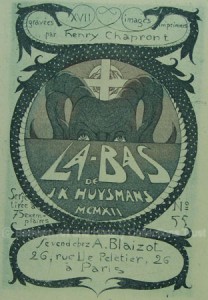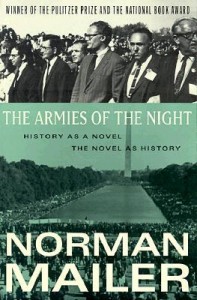DID YOU KNOW: In the summer of 1955, Mailer purchased two standard poodles, Tibo, who looked like a black sheep, and Zsa Zsa. They produced 32 pups over 17 years. Zsa Zsa died first; Tibo is buried in the garden of the house Mailer and his then-wife Beverly Bentley lived at 565 Commercial Street in Provincetown, MA. Mailer said that Tibo made such a variety of intelligent sounds that he appeared about to speak. Partly because of Tibo, Mailer concluded that dogs have souls.
Asides Page 1 of 2
NORMAN MAILER: A Double Life, by J. Michael Lennon. (Simon & Schuster, $20.) Lennon, who as Mailer’s authorized biographer had access to a trove of unpublished letters and papers, looks unflinchingly at the life of the towering American novelist and journalist who dissected the zeitgeist from the 1950s until his death in 2007. “There’s not a paragraph in this enormous book that doesn’t contain a nugget of something you should have known or wish you had known,” Graydon Carter wrote here.
DID YOU KNOW? When asked by Vanity Fair to name the qualities he most admired in women, Norman Mailer said “Beauty, mystery, wit, and the inner superiority to be above political correctness.”
DID YOU KNOW? Asked to name his favorite word by the New York Times, Mailer said: “Improvisational.”
DID YOU KNOW? In 1983, Mailer’s screenplay for The Executioner’s Song (directed by his long-time collaborator, Lawrence Schiller) was nominated for an Emmy. Tommy Lee Jones, in a break-through role, won one for playing Gary Gilmore, who was executed by a firing squad in January 1977. He was the first person executed in the U.S. in the ten years.
To obtain a review copy of the biography, please contact Maureen Cole, senior publicist at Simon and Schuster. The name of the review venue must be provided. Thank you.
DID YOU KNOW? In the Mailer Archive at the Harry Ransom Center (HRC) of the University of Texas-Austin, there are 222 boxes of Mailer letters. They cover the years 1939-2005. According to Steve Mielke, who was the supervising archivist cataloging Mailer’s papers, the number of letters in each box averaged 187 letters, or a total of 41,514. This figure does not count the approximately 1500 letters located in others files—business records, literary files and so on. This brings the total number to 43,014.This total does not include the letters Mailer wrote in 2006 and 2007, another 1200 letters, approximately. Nor does it include perhaps 200 additional letters sent to Lennon by various correspondents, letters lacking carbon copies at the HRC (many of these were hand-written). Finally, Mailer was a signatory of, roughly, 100 letters signed with others, public letters published in magazines and newspapers over a half-century. Counting all these letters brings the total to 44,614. It would not be unreasonable to assume that there are at least another 486 undiscovered letters out there. Therefore, 45,000 letters is a fair estimated grand total.
In some years, Mailer wrote 1000 letters, in others 200, but on average about 650. Unless he was in the homestretch on a book, he wrote his letters in spurts of 50-100 every few week. From the late 1950s on, he dictated most of them (tapes of these are stored in the HRC). Lennon reports that the average letter is 500 words, which yields of total of 22,500,000 words.
Some comparisons: Horace Walpole, one of the greatest literary correspondents of all time, wrote more than 5,000; so far 48 volumes of his letters have been published. The editors of the Hemingway letters project state that they will publish all his known letters, approximately 6,000. Samuel Beckett wrote 15,000. Queen Victoria wrote over 3,700 letters to her eldest daughter alone. Queen Elizabeth I wrote over 3,000.
The Selected Letters of Norman Mailer, edited by J. Michael Lennon, will contain approximately 750 letters. It will be published by Random House in the fall of 2014.
DID YOU KNOW? Perhaps the rarest of Mailer publications is his rebuttal to the response of a major architect, Vincent Scully, to Mailer’s August 1963 “Big Bite” column in Esquire. In that column, Mailer attacks modern architecture for being unimaginative, ugly and totalitarian: “The essence of totalitarianism is that it beheads. It beheads individuality, variety, dissent, extreme possibility, romantic faith; it blinds vision, deadens instinct; it obliterates the past.” Scully replied to Mailer in Architectural Forum (April 1964), and Mailer’s rebuttal appeared with it. This rebuttal, slightly revised, was published in July 1964 by Dolmen Press of Dublin as one leaf folded to make four pages, in an edition of 100 copies. It is titled “Gargoyle, Guignol, False Closet.”
 DID YOU KNOW? In 1976, Mailer published a screenplay based on Joris-Karl Huysmans’ novel of decadence and Satanism, Là-Bas (or “down there”). The English translation was published as The Damned. The protagonist, a novelist named Durtal, is researching the life of the 15th century nobleman and madman, Gillies de Rais, who killed scores of children and practiced various forms of sorcery, including a Black Mass. The novel is set in fin-de-siѐcle Paris, and was a sensation when it appeared in serial form in 1891. Mailer’s screen play appeared in Playboy in December 1976, and has never been reprinted. It won the magazine’s annual award for best piece of fiction.
DID YOU KNOW? In 1976, Mailer published a screenplay based on Joris-Karl Huysmans’ novel of decadence and Satanism, Là-Bas (or “down there”). The English translation was published as The Damned. The protagonist, a novelist named Durtal, is researching the life of the 15th century nobleman and madman, Gillies de Rais, who killed scores of children and practiced various forms of sorcery, including a Black Mass. The novel is set in fin-de-siѐcle Paris, and was a sensation when it appeared in serial form in 1891. Mailer’s screen play appeared in Playboy in December 1976, and has never been reprinted. It won the magazine’s annual award for best piece of fiction.
Mailer spoke French fairly well, having studied it in high school, college and at the Sorbonne on the GI Bill in 1947-48. He said that “the French novel has always been more congenial to me than the English, and much of what I learned as a young novelist came from Stendhal, from Proust, and from Malraux.” He went on to say that he also enjoyed the writing of Flaubert, Zola, Gide, Huysmans, Baudelaire, Sartre, George Simenon, and the writing of his great friend, Jean Malaquais, who Mailer met in Pairs in 1947.
 DID YOU KNOW? The Mailer book that received the best reviews was not his best-selling 1948 war novel, The Naked and the Dead, but a nonfiction book which was not a best seller, The Armies of the Night, his account of the October 1967 anti-war March on the Pentagon. Winner of a Pulitzer and the National Book Award, Armies barely edged out Naked, 4.100 to 4.031. These numbers were arrived at by rating the reviews his books received in 25 major publications (New York Times, Los Angeles Times, Time, Newsweek, New York Review of Books, National Review, Esquire, Chicago Tribune, Washington Post, Boston Globe, Commonweal, New Yorker, etc.) on a five-point, low- to-high scale, 1.0 for a dreadful pan, and 5.0 for an enthusiastic review with few caveats. Coming in third was Mailer’s 1972 collection, Existential Errands (3.777), and fourth, The Executioner’s Song (3.74). The book with the worst reviews was Mailer’s second book, Barbary Shore, a novel set in Brooklyn, which racked up a score of 1.944 (reviewers disliked the debates about politics and economics which take up half the novel). In next-to-last place is Portrait of Picasso as a Young Man, which totaled out at 2.000 (it was reviewed in large part by art critics and scholars, who felt Mailer was poaching on their turf). The publication that gave the most positive reviews to his work was The Village Voice, which he co-founded (3.929 average); the most negative reviews came from the liberal, anti-communist bi-weekly, The New Leader (2.167). Two others of note: The New York Times Book Review (3.111) ; and The New Yorker (2.846). A total of 417 reviews were rated for this study, which was published in the bibliography Lennon and his wife Donna Pedro assembled, Norman Mailer: Works and Days (Sligo Press, 2000).
DID YOU KNOW? The Mailer book that received the best reviews was not his best-selling 1948 war novel, The Naked and the Dead, but a nonfiction book which was not a best seller, The Armies of the Night, his account of the October 1967 anti-war March on the Pentagon. Winner of a Pulitzer and the National Book Award, Armies barely edged out Naked, 4.100 to 4.031. These numbers were arrived at by rating the reviews his books received in 25 major publications (New York Times, Los Angeles Times, Time, Newsweek, New York Review of Books, National Review, Esquire, Chicago Tribune, Washington Post, Boston Globe, Commonweal, New Yorker, etc.) on a five-point, low- to-high scale, 1.0 for a dreadful pan, and 5.0 for an enthusiastic review with few caveats. Coming in third was Mailer’s 1972 collection, Existential Errands (3.777), and fourth, The Executioner’s Song (3.74). The book with the worst reviews was Mailer’s second book, Barbary Shore, a novel set in Brooklyn, which racked up a score of 1.944 (reviewers disliked the debates about politics and economics which take up half the novel). In next-to-last place is Portrait of Picasso as a Young Man, which totaled out at 2.000 (it was reviewed in large part by art critics and scholars, who felt Mailer was poaching on their turf). The publication that gave the most positive reviews to his work was The Village Voice, which he co-founded (3.929 average); the most negative reviews came from the liberal, anti-communist bi-weekly, The New Leader (2.167). Two others of note: The New York Times Book Review (3.111) ; and The New Yorker (2.846). A total of 417 reviews were rated for this study, which was published in the bibliography Lennon and his wife Donna Pedro assembled, Norman Mailer: Works and Days (Sligo Press, 2000).
